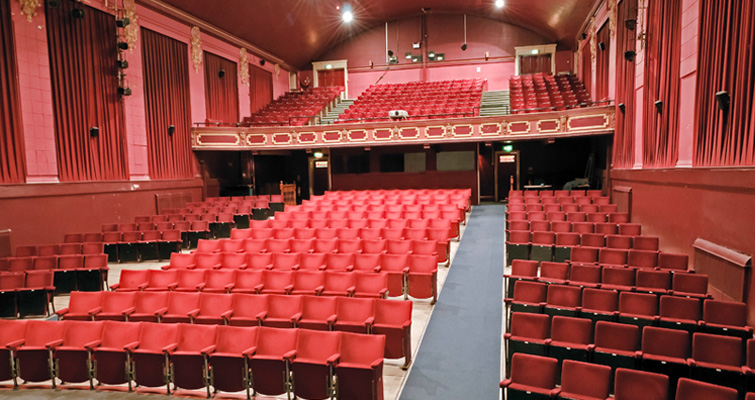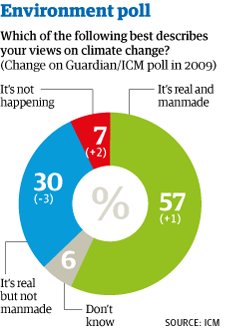As the house lights went up and the last Chasing Ice credits rolled, the woman in the next seat at Hebden Bridge Picture House said, “Now I feel like slitting my wrists.”
James Balogh – the subject of the Chasing Ice documentary – has clearly achieved his aim of providing spectacular visual evidence of the rapid onset of human-caused climate change, through several years of timelapse video recordings of melting glaciers. But is feeling like slitting one’s wrists the response he wanted?
The sociologist Jean Baudrillard had the interesting idea that we live in an era of disaster consumerism. The proposition is this: life in consumer society is so boring that it requires disasters to make people feel alive. The two great disasters that consumer society relies on/consumes are the weather (floods, tsunamis, hurricanes, droughts, wildfires) and car crashes. Readers of JG Ballard novels like Crash, Cocaine Nights and Supercannes will recognise them as fictions of disaster consumerism.
Arguably, climate change – associated with extreme weather powered to the nth degree- is nowadays crucial to disaster consumerism. If this is the case, framing climate change as the ultimate disaster may well be counterproductive, if the intention is to mobilise effective collective action to mitigate it. This crossed my mind while I watched Chasing Ice, and it’s not the first time this idea’s occurred to me in connection with what sometimes strikes me as climate disaster porn.
Early in Chasing Ice, James Balogh’s voice over explains the origins of his Chasing Ice project – the Extreme Ice Survey. Educated as a scientist, after graduation he discovered a preference for photography, inspired by the early 20th century wilderness photographer Ansel Adams. Ansel Adams, who worked within painterly conventions that have been called the American Sublime, was instrumental in creating the American conservation movement and setting up America’s National Parks. Quite a role model.
And not an unproblematic one. As Geoff Dyer wrote in his essay American Sublime,
“Finding new ways of framing the American landscape was part of a larger endeavour of husbanding and exploiting its resources…something…could, presumably be done to illuminate the dark side of the American landscape. Evidence of the fate of Native Americans, however, is almost entirely negative: there aren’t any left! Or only a few…and these lone Indians…seem like nothing else so much as…symbols of the pioneering spirit that culminated in their near-extermination.”
Chasing Ice is very much a document of James Balogh’s ‘pioneering spirit’. A huckster on a grand scale (his Extreme Ice Survey annual costs are in “six figures”), he performs endless feats of derring do – abseiling down icy abysses, dipping his hands into black holes where the ice sheet is melting into the ocean, dicing with death in a helicopter with only one working engine – “We won’t be able to hover with one engine” warns the pilot, before landing in a controlled skid on an airport runway where the fire crews are waiting in case they crash. Undergoing repeated knee surgery because he won’t cut out the derring do, despite doctor’s orders. But that’s ok. After his fourth knee surgery, a voice over tells us that his own stem cells have been used to successfully regenerate the pulverised joint. Is there anything this guy can’t do? He can even making wrist slitting seem like a rational activity for some of his audience.
All this “Oh my god he’s going to die stuff” (except we know he hasn’t) is punctuated with occasional footage of his wife and elder daughter sweetly and supportively reflecting on their feelings about his high risk behaviour. These bit part characters are audience proxies, in terms of their role in the documentary. They are telling the audience how to feel. We too must love him and let him get on with his mission, no matter how dangerous.
James Balogh’s voice over twice explains his reasons for documenting the glacier melts in extravagant time lapse videos. Near the start of the film, he says that he believes the public is unable or unwilling to take note of the scientific evidence for human-caused climate change, but that we will respond to spectacular images that bear witness to its most visible proof – rapidly melting glaciers.
Let’s unpack this a bit. The assumptions behind the statement are, first, that we the public are infantile – we can’t or won’t get our heads round scientific evidence, but we’ll have an emotional response to spectacular images. And, second, that human caused climate change is a problem because that the public haven’t got their heads round it.
In the UK, polls provide evidence that Balogh’s second assumption is incorrect. I don’t believe his first assumption is true either – and indeed this is pretty much undermined by the polls’ evidence that most people accept that climate change is both real and human-caused.
I believe the problem is that we live in a society where as a result of over 30 years of neoliberal ideology, politics has ceased to be fit for purpose (does the phrase “post-political society” ring a bell?). In consequence, massive oil and fossil fuel companies are able to operate without check or stay. The way to tackle climate change is to free ourselves from this neoliberal corporate serfdom and stop the fossil fuel companies from extracting and burning fossil fuels.
Near the end of the film, the Ice Chaser says that when in thirty years time his daughters ask him what he did in the climate change war, he wants to be able to say he did everything he possibly could. How self-serving and cliched.
Bearing witness is important, James Balogh is right about that. We need evidence that climate change is happening and that its effects are destructive. But Chasing Ice is, as the title implies and the blurb makes explicit, about the person bearing witness more than what he bears witness to – about
“one man’s mission to change the tide of history by gathering undeniable evidence of climate change.”
He got the money shot – a chunk of glacier with the footprint of lower Manhatten and higher than its tallest buildings, calving into the sea with a violence worthy of a disaster movie. But as Baudrillard and Ballard indicated, disaster porn is implicated in and necessary to the survival of consumerism.
Those who didn’t leave Hebden Bridge Picture House feeling like slitting their wrists seemed cheerful. Maybe Chasing Ice serves to make audiences feel good for being among the elect of those who recognise climate change is a bad thing. Having salved our conscience by vicariously enduring the death-defying exploits of the Ice Chaser, and contemplating the horrors of the disasters he witnessed, we can emerge purged into the night to carry on as before.
Updated 1 April 2013, with graphic and information from ICM/Guardian 2012 poll.




So some were cheerful and some were slitting their wrists. Not sure what this proves. Maybe you should have sat next to one of the cheerful ones.